#DOCSTeach
Explore tagged Tumblr posts
Text

Happy #NationalComicBookDay! Did you know the National Archives carries a wide array of comic books such as this No.90 "Batman" comic once used as evidence in an investigation by the Judiciary Committee of the United States on juvenile delinquency?
In April 27, 1953, the Judiciary Committee of the United States Senate created a Special Subcommittee on Juvenile Delinquency to investigate the causes of juvenile delinquency and to propose measures in response. The subcommittee examined several factors influencing young people, but it drew the most attention when it investigated the allegation that comic books contributed to the rise in juvenile crime. The subcommittee looked at comics like this one as evidence.
The early 1950s were a time of great anxiety about the nation’s youth. In 1955, Newsweek magazine reported that the national crime rate had increased by 33.4 percent since 1940, largely due to increased criminal acts by teenagers. Comic books were a new form of media and among the first consumer products specifically marketed to teenage buyers. Civic and religious leaders linked comic book reading to antisocial and criminal behavior, and several major newspapers launched anti–comic book editorial campaigns.
During April and June, 1954, the Subcommittee on Juvenile Delinquency held televised public hearings in New York, the center of the comic book publishing industry. They were especially concerned about comic books’ vivid, detailed illustrations of violent acts. In the end, the subcommittee found that reading comic books did not cause teenagers to commit crimes. They ruled against censoring or banning comics and instead called on the comic book industry to regulate itself by adopting a ratings code and imposing a voluntary ban on depictions of extreme violence. The committee concluded that, ultimately, it was a parent’s role to screen material their children read.
337 notes
·
View notes
Text
4 notes
·
View notes
Photo

“Drawing for a Staple Magazine and Feed Means for Stapling Machines,” 3/14/1944
Series: Patent Case Files, 1/1/1836 - 12/31/1978. Record Group 241: Records of the Patent and Trademark Office, 1836 - 1978.
Henry Ruskin’s 1944 patent for the staple magazine and feed is still familiar to people today. Ruskin attempted to construct a simple and compact stapler. In his application, he claims that his design feeds staples very simply, accurately, and effectively.
via DocsTeach
#patent drawing#patents#stapler#inventions#office space#staple#Henry Ruskin#patent application#docsteach#archivesgov#March 14#1944#1900s#1940s
113 notes
·
View notes
Text
Greenleaf’s New Daily Advertiser
See the signature? Ann Greenleaf- that was a woman publishing a newspaper in the 1790s! According to the Library of Congress, the paper was published from 1796-1800. It appears that Boardman was subscribed to an anti-federalist publication, and the receipt is for his payment for “News up to the fifth May last-99-” as well as for payment to the estate of Thomas Greenleaf, Ann’s husband. Thomas died of yellow fever, and Ann took over publication of his paper. She was one of twenty five people arrested for violating the sedition act. You can read more about the case and view her indictment at the DOCSTeach site.

3 notes
·
View notes
Link
The National Archives at Philadelphia team digitized and made available in the National Archives Catalog all photographic exhibits from the landmark civil rights case Dorothy E. Davis, et al. v. County School Board of Prince Edward County, et al. – which was ultimately decided by the Supreme Court, along with three other school segregation cases, in Brown v. Board of Education of Topeka. Our Education Department colleagues have made many of them available on DocsTeach for students and teachers to utilize inside and outside the classroom. You can learn more by reading the National Archives Education Updates blog
#desegregation#docs#docsteach#primary sources#primarysources#education#archives#history#activisim#student
47 notes
·
View notes
Photo

Police Report on Arrest of Rosa Parks
On December 1, 1955, during a typical evening rush hour in Montgomery, Alabama, a 42 year-old woman took a seat near the front of the bus on her way home from the Montgomery Fair department store where she worked as a seamstress. Refusing to yield her seat to a white passenger when instructed by the bus driver, police were called and she was arrested.
The police report shows that Rosa Parks was charged with “refusing to obey orders of bus driver.” According to the report, she was taken to the police station, where she was booked, fingerprinted, and briefly incarcerated.
The event touched off a 381-day boycott of the Montgomery, Alabama, bus system in which a 26-year-old unknown minister, Martin Luther King, Jr., emerged as the leader.
Source: DocsTeach
2 notes
·
View notes
Text
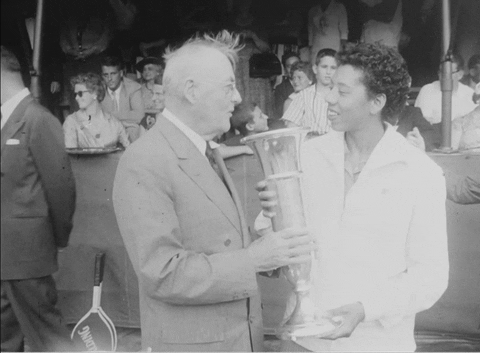

1958 US Nat'l Championship NY. USIA records, NARA ID 58260.
#OTD 1957: Althea Gibson Wins Wimbledon! 1st Black Tennis Player to win a Grand Slam! By Miriam Kleiman, Public Affairs
See DocsTeach: Althea Gibson Wins the US Nat'l Championships.
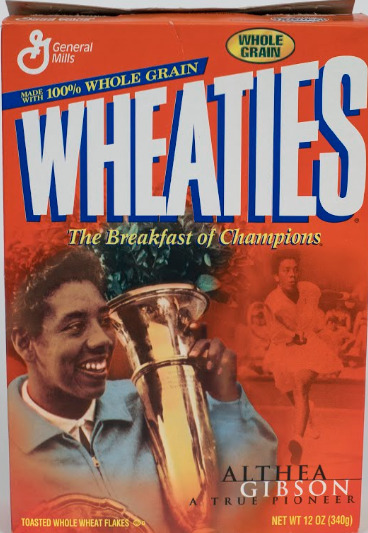

Gibson, L, on the Wheaties box in 2001. Serena Williams, R, in 2019.
"In 2001, Wheaties paid homage to a true champion and an icon by putting her on the cover of a Wheaties Box. Althea Gibson was the FIRST Black Woman tennis player to be on the box. Today, I am honored to be the second."
"I have dreamt of this since I was a young woman and it’s an honor to join the ranks of some of America’s most decorated athletes. I hope my image on this iconic orange box will inspire the next generation of girls and athletes to dream big." ---Serena Williams.
From Harlem, Gibson became a champion of the very segregated sport of tennis. She was the first Black tennis player to compete and win at both Wimbledon and the U.S. Nationals (Arthur Ashe was the first Black man to win at Wimbledon 8 years later, in 1975).
#BLM#black women#african american history#tennis#wimbledon#althea gibson#blackgirlmagic#herstory#black lives matter#civil rights#womenshistory#tennishalloffame#grandsllam#sporthistory#women in sports#blackwomen#blackgirlsrock#archivesblackeducation#Youtube#docsteach#serena williams#wheaties
1K notes
·
View notes
Photo

Air flight celebrating the signing of the Armistice, San Diego, California. 11/27/1918
Kearney Photo Service, Photographer. File Unit: Airplanes - Historical, 1917 - 1918. Series: American Unofficial Collection of World War I Photographs, 1917 - 1918. Record Group 165: Records of the War Department General and Special Staffs, 1860 - 1952.
via DocsTeach
#Armistice Agreement#World War I#WWI100#WWI#California#San Diego#celebration#planes#flying#Rockwell Field Aviators#peace agreement#peace#1900s#1910s#November 27#1918#DocsTeach#archivesgov
98 notes
·
View notes
Photo

Pictured here is an annotated map of busing routes for George W. Watkins School, which was used as an exhibit in the U.S. District Court for the Eastern District of Virginia, Richmond Division Case Green v. New Kent County. The decision of the United States Supreme Court to desegregate schools in the 1954 landmark case Brown v. Board of Education was just the beginning of the desegregation fight. In order to meet the provisions outlined by the Supreme Court in Brown v. Board of Education, while also avoiding integrating white and black school populations, many schools implemented “freedom of choice” plans. These plans did not explicitly prevent black students from attending a white school, or vice versa, but it put the responsibility of integration on the student and their family. “freedom of choice” plans placed institutional hurdles and reinforced social stigma against integrating black and white schools, which effectively halted desegregation efforts in the South.
In 1965, parents in New Kent County, Virginia, complained that the school district was deliberately maintaining a segregated school system after Brown v. Board of Education. They brought their case to the U.S. District Court for the Eastern District of Virginia, Richmond Division where the court upheld New Kent Court’s “freedom of choice” plan. The case was then brought to the U.S. Court of Appeals for the Fourth Circuit, which affirmed the lower court's decision (though it returned the case to the lower court for a more specific plan to desegregate teachers).
The case made it to the Supreme Court in 1968, which reversed the lower court rulings. The Supreme Court stated that the New Kent district was deliberately maintaining a segregated system and that "freedom of choice" was not sufficient to bring about desegregation. Justice William J. Brennan, Jr., writing for a unanimous court, declared: "It is incumbent upon the school board to establish that its proposed plan promises meaningful and immediate progress toward disestablishing state-imposed segregation."
Educators and parents can review documents and create activities for students by visiting DocsTeach, which features digitized records from all three cases, as well as contextual information to help students learn more about this topic: https://www.docsteach.org/documents?filter_searchterm=Green+County+School+Board+New+Kent+County&searchType=all&filterEras=&filterDocTypes=&sortby=date&filter_order=&filter_order_Dir=&rt=cthCC3zZbaWv&reset=1
You can also learn more by visiting our online catalog (catalog.archives.gov) and reviewing digitized documents from each case.
#brown v. board of education#online resources#education#desegregation#segregation#integration#archives#records#digitized#national archives#NARA#virginia#DOVE
15 notes
·
View notes
Text
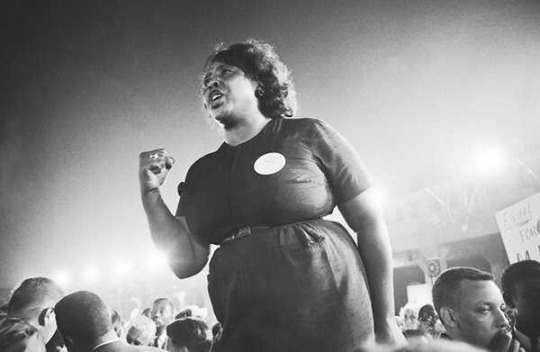
Civil rights crusader Fannie Lou Hamer represents the Mississippi Freedom Democratic Party. Methodist Church Ministries/Kenneth Thompson, online here.
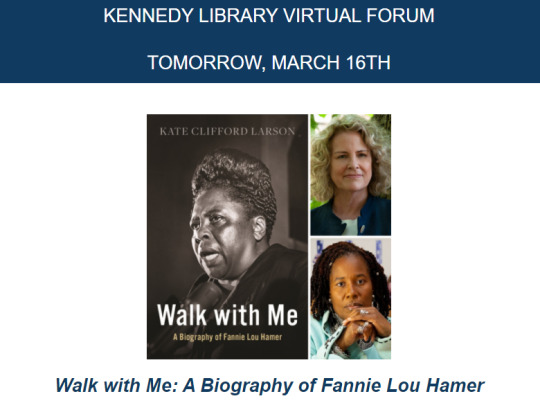
“NOBODY’S FREE UNTIL EVERYBODY’S FREE.”
In honor of Women's History Month (March) and Black History Month (Feb), we continue our celebration of Black women with this special virtual Kennedy Library Forum on March 16 at 7 pm ET. Register here to watch live or later.
Kate Clifford Larson, visiting scholar at the Brandeis Women’s Studies Research Center, will discuss her new book with Karsonya (Kaye) Wise Whitehead, professor of communication and African and African American studies at Loyola University Maryland.
Walk with Me: A Biography of Fannie Lou Hamer draws on new interviews and fresh archival material to explore Hamer’s life and impact on the civil rights movement. Kennedy Library education and public programs on civil rights and social justice are supported in part by AT&T.
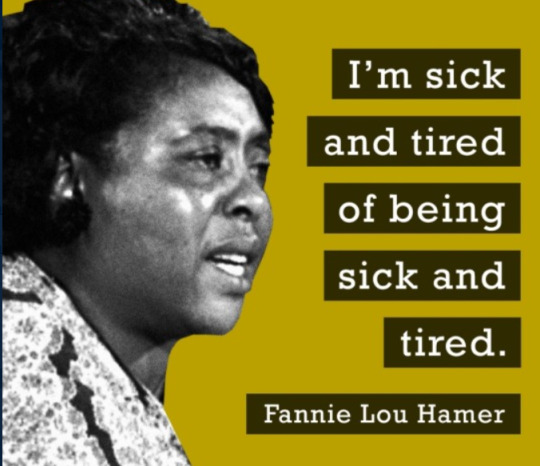
Archives specialist Netisha Currie wrote about Hamer for the National Archives Say It Loud! Employee Affinity Group's Rediscovering Black History blog's Black History Basic Training series. Currie shared Hamer’s incredible history that included African American voter registration, organizing Freedom Summer, co-founding the Mississippi Freedom Democratic Party, and helping to establish the National Women’s Political Caucus in 1971.
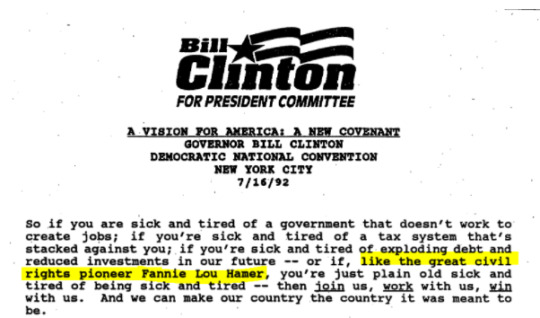
Governor Bill Clinton’s “Vision for America” speech at the Democratic National Committee (DNC), 7/16/1992, Clinton Library, NARA ID 18557458.
FOR KIDS AND EDUCATORS:
DocsTeach: Fannie Lou Hamer and Voting Rights: Students will analyze a portion of Hamer's testimony at the 1964 Democratic National Convention about registering to vote in Mississippi in 1962. They will answer questions to understand the specific challenges Black Americans faced, and the motivations behind the Civil Rights Movement.
Meet Fannie Lou Hamer: National Archives Comes Alive! Young Learners Program. Online here. Hamer (as portrayed by Sheila Arnold) shared her story from her birth as the 20th child of parents who were tenant farmers in Mississippi to her efforts to organize the Mississippi Freedom Summer for the Student Nonviolent Coordinating Committee (SNCC) and more.
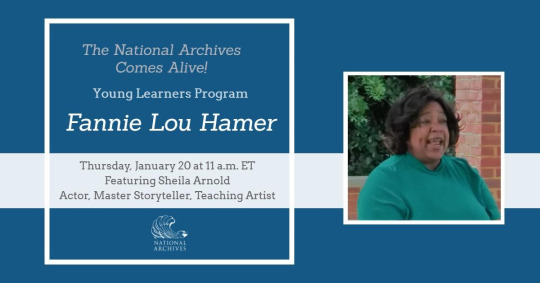
#blm#goodtrouble#civil rights#girltrek#freedom summer#sayitloud#rediscoveringblackhistory#women's history month#JFKlibrary#kennedylibrary#katecliffordlarson#fannie lou hamer#blackmommyactivist#loyola#brandeis#clintonlibrary#docsteach
182 notes
·
View notes
Note
Briefly explanation transcript of general Dwight D. Eisenhower’s order of the day(1944) 2 to 3 sentences
You might find our DocsTeach page about this document helpful in your analysis: https://www.docsteach.org/documents/document/dday-statement
20 notes
·
View notes
Text
Instant Homework Help
For this assignment, you need to visit the National Archives DOCSTeach site. Historians typically use two types of materials, secondary source, and primary source documents. Secondary sources are typically books and articles written on a particular historical event, well after the fact. Primary source documents are usually generated by first-hand participants. Good historians rely heavily on…
View On WordPress
0 notes
Text
American history homework help
American history homework help
For this assignment, you need to visit the National Archives DOCSTeach site. Historians typically use two types of materials, secondary source, and primary source documents. Secondary sources are typically books and articles written on a particular historical event, well after the fact. Primary source documents are usually generated by first-hand participants. Good historians rely heavily on…
View On WordPress
0 notes
Link
2 notes
·
View notes
Text
edshelf Weekly - Research Tools
Research tools abound on the Internet. From looking through primary sources to searching through existing books to organizing all of your findings, here are some teacher-recommended tools for doing in-depth research.

FEATURED TOOL
Zotero - Collect, organize, cite, and share your research sources using this Windows and Mac program. FREEMIUM
JSTOR - Look through this digital library of over 1,500 academic journals, books, and primary sources. FREEMIUM
DocsTeach - Find ready-to-use activities, or create your own using primary sources. FREE
Science Books Online - Access free science e-books, textbooks, lecture notes, monographs, and other science related documents. FREE
Digital Public Library of America - Search through digital content gathered from America's libraries, archives, and museums. FREE
Want more? Check out these shelves of tools created by members like you.
Research/Primary Resources - Curated by digital literacy instructional specialist Christine Schein.
Research Skills - Curated by library media specialist Lisa Luciano.
Enjoy these great tools for educators and students! Looking for previous issues of the edshelf Weekly? All are available online.
Want a fresh copy of the edshelf Weekly newsletter in your inbox too? Sign up with edshelf today!
- Mike Lee, Co-founder of edshelf
30 notes
·
View notes
